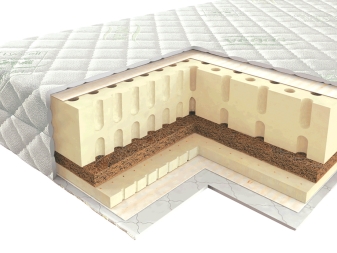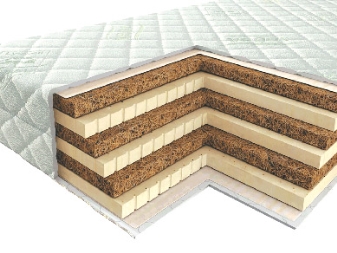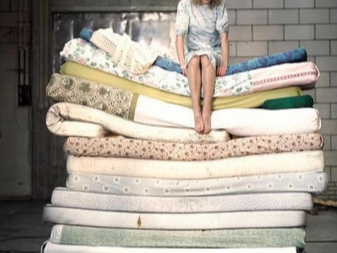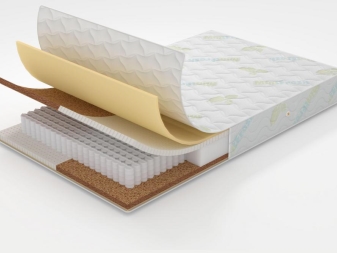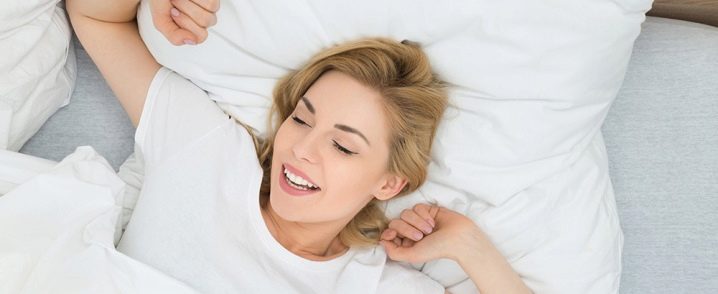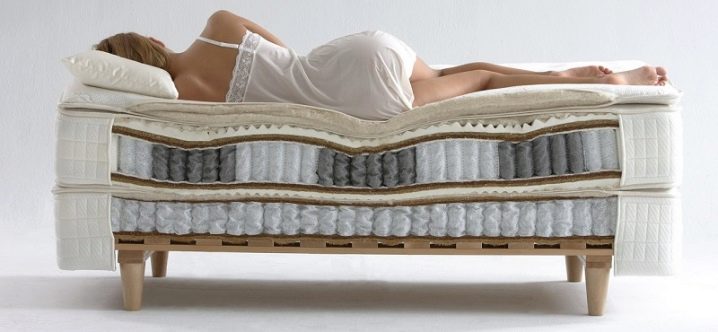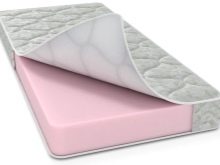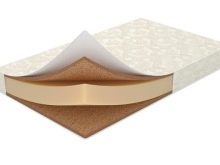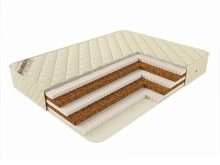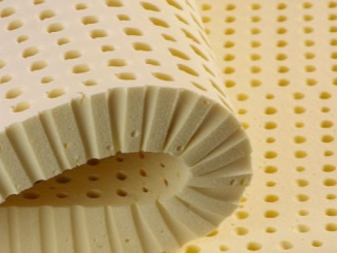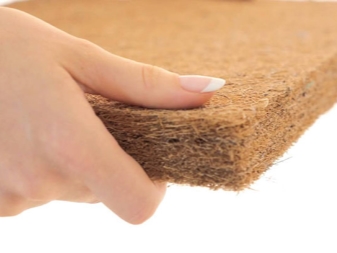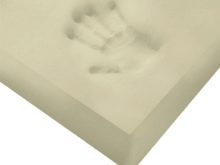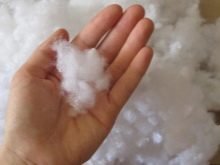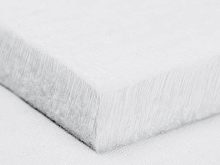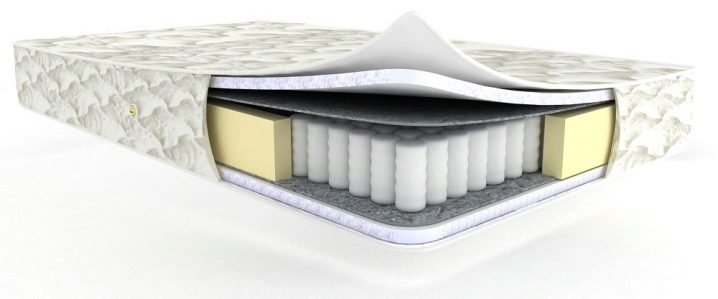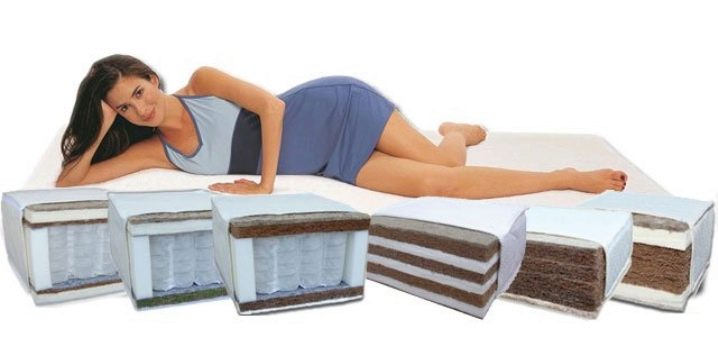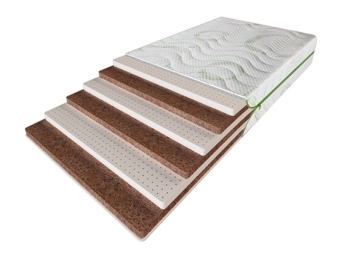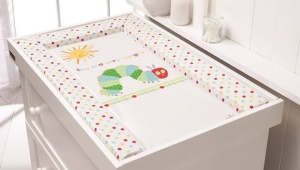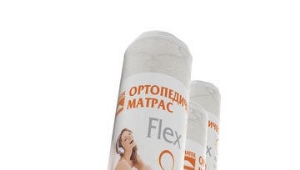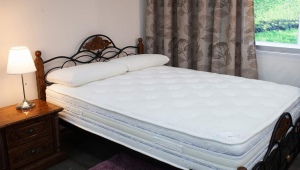Springless orthopedic mattresses
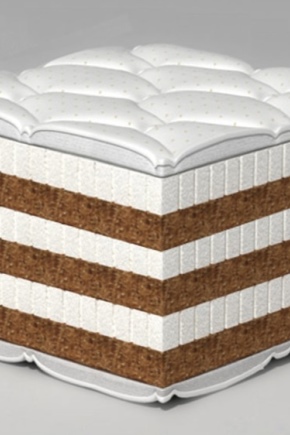
A good mattress - the basis of a good rest. However, in a large selection of products is easy to get lost, because each seller advertises only his product, attributing to him the miraculous properties. For a purchase to be successful, you need the right approach and knowledge of both the positive and negative qualities of each type of mattress. The most commonly recommended models are springless orthopedic mattresses.
Special features
First you need to know that the name "orthopedic" is conditional: no existing mattress with orthopedic effect is not a treatment for spinal problems. Whatever the advertisement, a hard block can only be the prevention of diseases of the musculoskeletal system. To get rid of the problem, you need appropriate treatment and properly selected set of physical exercises.Mattresses with orthopedic effect are designed to ensure the correct position of the body during sleep or rest.
Of course, of all the existing types of blocks in terms of degree of rigidity, they are the most dense and reliable.
Despite external rigidity, it is these mattresses that are able to completely relax the muscles, reduce pressure on the spine, and even remove the unpleasant sensation of numbness in the limbs.
The main features of the design of mattresses without springs include the following:
- due to the composition of the filler, they differ elasticity, but can be both light and heavy;
- they can not be twisted into a roll;
- In addition to the usual options, manufacturers produce options "winter summer" with different bilateral filler;
- on the one hand, the combined mattress can be very rigid, on the other - moderate hardness.
All types of mattresses without springs differ in size, thickness, the presence or absence of a removable cover and the type of filler. The structures are made of fibers and foam materials of natural and artificial origin.
Springless orthopedic mattresses have several advantages:
- they have no metal components, so not traumatic and even suitable for children;
- regardless of the age they are do not creak and do not have a similar annoying sound;
- if you choose the right filler and block construction method, such a mattress will serve much longer analog with springs;
- due to the absence of steel elements such a mattress does not stretch;
- material from springless fillers is not electrified, therefore does not create a magnetic field;
- in most cases they are performed from hypoallergenic materialnon-irritating and non-allergenic;
- springless mattresses easy to use, provide relaxation to the body, contribute to a positive attitude for the working day;
- they are distinguished by density and rigidity, in most cases do not pass dust as analogues on the springs;
- these mattresses support correct body position therefore, they are suitable not only for sick people, but also for children whose skeleton is still in the formative stage;
- constructions easy to clean, they are not subject to the appearance of fungus, mold and rotting process.
disadvantages
For all its merits, some types of block have disadvantages.First of all, it should be noted that models with orthopedic effect are not designed for people with excess weight.
Some materials (for example, latex) are able to change their properties: depending on the change in temperature, they can become tougher. In addition, quality blocks without springs are expensive because of expensive packing material.
Structure
Orthopedic mattress is different. All types of its structures are divided into three types:
- monolithic - a block of solid filler with holes of a cylindrical shape of different diameters (to ensure different levels of elasticity of each zone), dressed in a textile case;
- combined - monolithic block with additional layers of filler of different degrees of rigidity (soft variations without loss of the orthopedic effect);
- puff - a mattress without a pronounced base (layers of identical thickness from different fillers with different degrees of rigidity, interconnected with a special glue).
Each unit has its pros and cons, so the choice of the mattress is based on their own preferences. Depending on their structure, mattresses can be quite lush (up to 15 - 18 cm) or thin (8 cm).
A thin option is usually purchased for children, such a block is small, but quite tough.
Filler and its properties
Mattress padding is the main determinant of its quality and characteristics. The main fillers of springless mattresses are:
- natural latex - dense material obtained by processing Hevea juice, which has a high degree of elasticity, elasticity and flexibility;
- synthetic latex - analogue of natural, but inferior to him in wear resistance and characterized by a large indicator of rigidity;
- coir - a fibrous substance obtained by the method of processing coconut pericarp, characterized by high rigidity and wear resistance;
- polyurethane foam - budget alternative to latex mattresses on the basis of foam, which has a shorter service life and density, however, the material is quite elastic and resistant to weight loads;
- holofiber - fibrous filler made of polyester in the form of spirals swirling shape, which has good air exchange and is resistant to moisture;
- struttofiber - stuffing with excellent performance and orthopedic properties in the form of vertical fibers.
Dimensions
Mattress dimensions depend on the standards of each furniture company. Therefore, their length and width may differ slightly even among two different companies. On average, a bed of a springless mattress can be 180x200 or 160x200 cm. Less often, developers produce variants for one place with parameters of 90x190 cm. These sizes are suitable for teenagers and children of primary school age.
In any case, the choice of mattress is appropriate for a particular person with regard to height. It is important that at least a small margin of 20-30 cm remains in the lying position in length.
Which is better?
Definitely answer the question, which mattress is better: spring or springless, it is impossible. Each type of mattress has its advantages. Sometimes spring block designs are pretty good and compete with models without springs.
For example, if we compare the best designs on both sides (a latex mattress and a block with independent springs), both of them are good and have an equal service life. Due to the special structure of the springs, dressed in individual textile covers, the spring mattress will not creak and will ensure the correct position of the spine (sitting or lying).
In addition, the spring blocks can also have an additional layer of stuffing from the same fillers (polyurethane foam, coconut coir, holofiber). Additions protect the spring from pushing and give the mattress the desired degree of rigidity.
Reviews
Reviews of springless mattresses are controversial. One customer likes such designs, because they really do not creak, serve for a long time and are not as soft as counterparts with springs. They are chosen for durability, hypoallergenicity and lightness of the material.
Other comments suggest that with an increased weight load, such mattresses can be pressed through, forming small dents in the center of the mat. However, springless mattress should be chosen not only taking into account the wishes of the buyer. If you have health problems, it is important to have an idea about the orthopedic performance of any design and to consider medical recommendations for choosing the optimal degree of rigidity.
How to choose an orthopedic mattress? The following video reveals all the secrets of the manufacturer.
